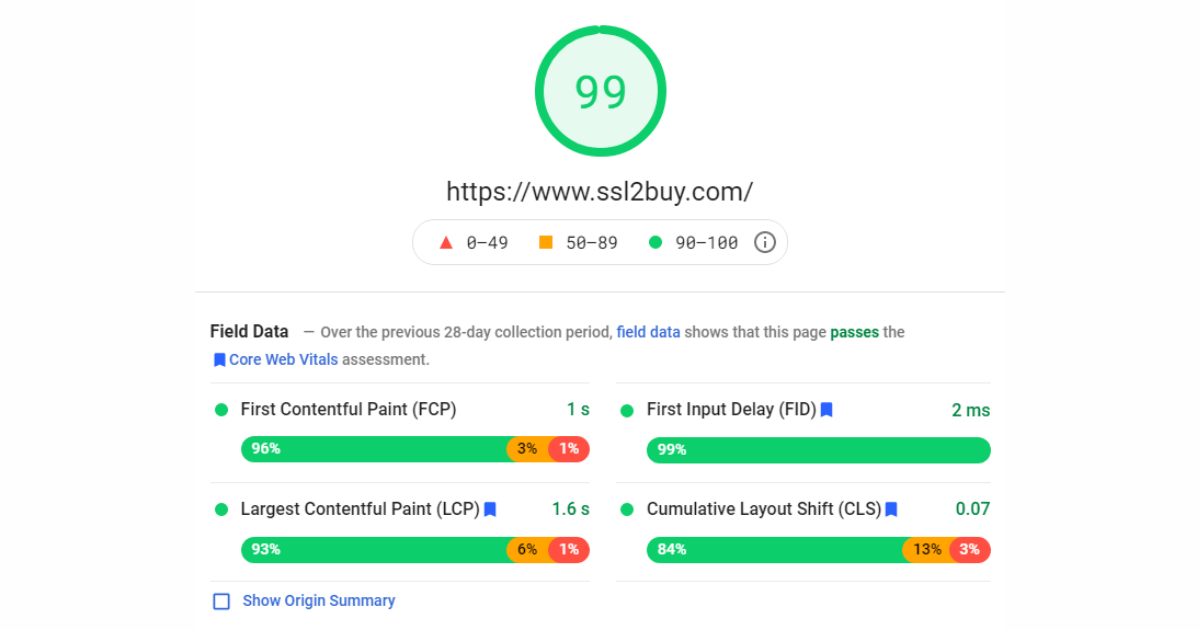Google’s Core Web Vitals have become a crucial ranking factor in search engine optimization. These performance metrics measure the quality of the user experience on your website, directly influencing how your site performs in Google search results. In simple terms, if your website loads slowly, responds poorly, or shifts elements around while a visitor is browsing, your rankings could suffer.
In this guide, we’ll break down what Core Web Vitals are, why they matter, and actionable steps to improve them so your site performs better in search and delivers a seamless user experience.
What Are Core Web Vitals?
Google introduced Core Web Vitals as part of its Page Experience update, focusing on three key aspects of user interaction:
- Largest Contentful Paint (LCP): Measures loading performance. A good LCP should occur within 2.5 seconds of when the page starts loading.
- First Input Delay (FID): Measures interactivity. A page should have an FID of less than 100 milliseconds to ensure smooth responsiveness.
- Cumulative Layout Shift (CLS): Measures visual stability. Pages should maintain a CLS score of less than 0.1 to prevent elements from shifting unexpectedly.
These metrics reflect how fast your site loads, how responsive it feels, and how stable the design is while users are interacting with it.
Why Core Web Vitals Matter for SEO
User experience is central to Google’s ranking algorithms. Even if your content is high quality, a poor experience can drive visitors away and harm your SEO. Here’s why improving Core Web Vitals is essential:
- Better Rankings: Websites that perform well in Core Web Vitals have an advantage in search engine results.
- Lower Bounce Rates: Fast and responsive websites keep visitors engaged, reducing bounce rates.
- Higher Conversions: A smoother user experience often translates into more leads, sales, or sign-ups.
In short, Core Web Vitals bridge the gap between SEO and UX, rewarding websites that prioritize both.
How to Measure Core Web Vitals
Before improving, you need to measure. Google provides several tools to assess Core Web Vitals:
- Google PageSpeed Insights – Offers a detailed report with field and lab data.
- Google Search Console – Provides site-wide Core Web Vitals reports across your indexed pages.
- Lighthouse – A performance auditing tool integrated into Chrome DevTools.
Regularly monitoring these metrics helps you pinpoint performance bottlenecks and track improvements.
Step 1: Improve Largest Contentful Paint (LCP)
To enhance loading performance, focus on speeding up how quickly the main content appears:
- Use a fast hosting service: A reliable hosting provider can significantly reduce server response times.
- Optimize images: Compress large images and use modern formats like WebP.
- Enable browser caching: Store frequently used resources locally for faster reloads.
- Use a Content Delivery Network (CDN): Distribute content across servers closer to your users.
- Eliminate render-blocking scripts: Defer or minimize JavaScript and CSS files that slow down initial loading.
Step 2: Reduce First Input Delay (FID)
Improving interactivity ensures users can engage quickly without frustrating delays:
- Minimize JavaScript execution: Break down large scripts into smaller chunks.
- Use web workers: Offload heavy tasks to run in the background.
- Reduce third-party scripts: Too many trackers and widgets slow responsiveness.
- Optimize your code: Clean up unused or redundant JavaScript.
By lightening the load on the browser, your website will feel more responsive.
Step 3: Fix Cumulative Layout Shift (CLS)
Visual stability is often overlooked but crucial for a smooth user experience:
- Set explicit dimensions for images and videos: Prevent shifting by defining height and width.
- Avoid inserting ads or banners above content without reserved space.
- Use stable fonts: Implement font-display strategies to prevent style shifts during loading.
- Reserve space for dynamic content: Allocate fixed slots for elements like pop-ups or forms.
Stabilizing page layout keeps users focused and avoids accidental clicks caused by shifting elements.
Step 4: Optimize Mobile Performance
Since mobile traffic dominates the web, Core Web Vitals optimization should prioritize mobile devices. Ensure your site is:
- Mobile-responsive with fluid grids and flexible images.
- Free of intrusive interstitials that block content.
- Tested on real devices for usability and performance.
A smooth mobile experience ensures your site is aligned with Google’s mobile-first indexing approach.
Step 5: Leverage Tools and Technology
Improving Core Web Vitals is ongoing. Tools and platforms can automate optimization and streamline monitoring. Solutions like mediaupshift help repurpose, test, and adapt content for different platforms, ensuring performance consistency across formats.
Additionally, site speed plugins, image optimization tools, and analytics dashboards can all assist in long-term Core Web Vitals improvement.
Step 6: Regularly Monitor and Update
SEO is never static. As your website grows, new content, plugins, or design changes can impact Core Web Vitals. Make it a habit to:
- Run monthly performance audits.
- Update old content with optimized images and scripts.
- Re-test after every design or plugin update.
Consistent monitoring ensures your efforts don’t go to waste.
Final Thoughts
Improving Core Web Vitals is about more than satisfying Google’s algorithm—it’s about delivering a smooth, enjoyable, and professional experience to your visitors. By focusing on LCP, FID, and CLS, you’ll create a site that loads quickly, responds instantly, and remains visually stable.
The result? Higher rankings, more traffic, and better engagement. Invest in these optimizations now, and your website will stand out in both performance and user satisfaction.






Comments